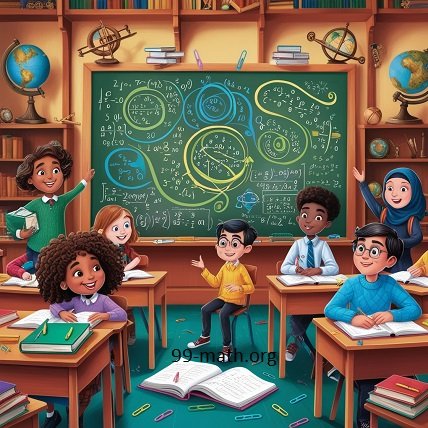Introduction
Drawing has always been a basic human expressive medium, going all the way back to when prehistoric people drew ideas and narratives on the walls of their caves. education drawing has developed throughout the ages from a basic means of communication to a complex art form, impacting a wide range of disciplines including science, technology, and architecture. Drawing is an essential educational tool that promotes creativity, sharpens cognitive skills, and enhances learning outcomes in general.
The Role of Drawing in Early Childhood Education
For young children, education drawing comes naturally and is essential to their general development. Even before they can describe their thoughts, feelings, and imagination in words, youngsters express them through sketching. Drawing aids in the development of fine motor abilities, hand-eye coordination, and spatial awareness in early childhood education. As kids start to comprehend forms, symbols, and patterns, it also lays the groundwork for literacy and numeracy abilities.
Drawing as a Learning Tool in Primary Education
education drawing still has a big impact on kids’ learning even as they become older and enter primary school. At this point, drawing takes on more organization and is frequently included into language arts, science, and math classes. In mathematics, for example, drawing can make abstract ideas more concrete by assisting pupils in visualizing difficult issues like geometry or fractions. Drawing in science
The Cognitive Benefits of Drawing in Education
education drawing offers several cognitive advantages in addition to being an artistic endeavor. Drawing has been linked to enhanced critical thinking, problem-solving, and memory recall, according to research. Students that draw use different parts of their brains, such as those involved in decision-making, motor control, and visual processing. Deeper learning is facilitated and cognitive functions are enhanced by this multimodal experience.
The Emotional and Psychological Impact of Drawing
education drawing has a significant positive influence on pupils’ emotional and psychological health in addition to its cognitive benefits. It gives children a means of self-expression by enabling them to convey their ideas, emotions, and experiences nonverbally. This is especially crucial for pupils who have suffered trauma or who might find it difficult to communicate verbally. Drawing can be therapeutic, giving pupils a secure way to express their feelings and aiding in their experience processing.
Drawing in Secondary Education: Enhancing Subject Understanding
education drawing is still a useful technique in secondary education for improving subject comprehension. Students who draw intricate diagrams and models in disciplines like biology, chemistry, and physics are better able to understand difficult concepts. Drawing the periodic table or the structure of DNA, for instance, can help with comprehension and memorizing. Students can learn more about historical events and geographical areas in social studies and history classes by creating timelines and maps.
The Intersection of Technology and Education Drawing
The use of technology in the digital age has changed how we approach education drawing in the classroom. New avenues for creativity and education have been made possible by digital drawing tools and software. Students can produce complex drawings, 3D models, and animations using programs like Adobe Illustrator, Procreate, and Tinkercad, which help to bridge the gap between conventional drawing and contemporary technology. Particularly helpful in STEM (Science, Technology, Engineering, and Mathematics) education are these digital tools.
Drawing as a Pedagogical Strategy: Encouraging Active Learning
One effective teaching tool for promoting active learning in the classroom is education drawing. Students that engage in active learning participate in the process of learning as opposed to being passive consumers of knowledge. Students can interact more deeply with the topic as they visually examine, interpret, and represent it through drawing.
Drawing and Differentiated Instruction
A teaching strategy known as differentiated instruction adapts lessons to each student’s unique needs. In the classroom, drawing is a flexible tool that can be utilized to differentiate education drawing. Drawing can be a useful tool for processing and remembering information for those who learn visually. Drawing can offer learners with learning impairments a different way to convey and comprehend ideas. Instructors can also use sketching as a tool to gauge their students’ understanding of a subject and pinpoint any areas in which they might require more assistance.
Conclusion
education drawing is an effective teaching technique that has several advantages for students of all ages. Drawing is an essential part of learning since it may be used to express oneself, improve cognitive function, promote creativity, and provide an alternate method of evaluation. Teachers can create a more dynamic and engaging learning environment by integrating sketching into the curriculum and overcoming the accompanying hurdles.
FAQ
Read about more: howeversynonym.com
What is education drawing
Drawing as a tool for teaching and learning in educational contexts is referred to as education drawing. It entails introducing drawing exercises into the curriculum to improve students’ conceptual comprehension, encourage creativity, and assist with cognitive growth.
How does drawing benefit early childhood education?
Drawing aids in the development of hand-eye coordination, spatial awareness, and fine motor abilities in early childhood education. As kids start to comprehend forms, symbols, and patterns, it also establishes the groundwork for literacy and numeracy abilities.
Can drawing improve cognitive abilities?
Yes, drawing activates several brain regions, such as those involved in decision-making, motor control, and visual processing.

